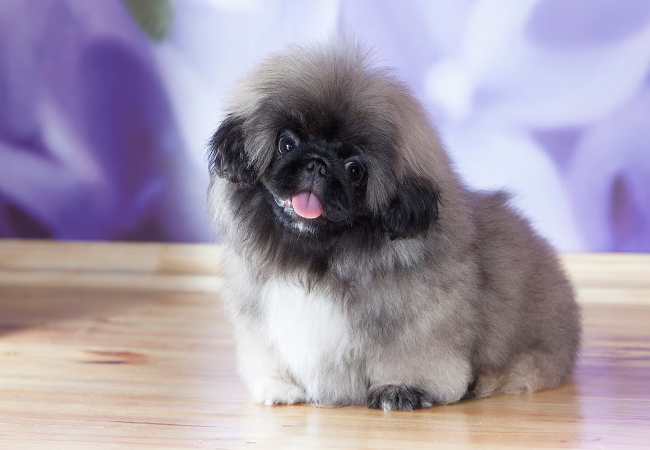Pekingese Guide 2025: Vet Approved Regal Lion-Dog Care ✅🦁

In this article
Pekingese Guide 2025: Vet Approved Regal Lion-Dog Care ✅🦁
By Dr. Duncan Houston BVSc
Introduction 🌟
The Pekingese is an ancient toy breed from imperial China, bred to be companion lapdogs for royalty. With its iconic "lion dog" appearance—long mane, compact body, flat face—this confident, independent dog is beloved for its dignified air and affectionate devotion. In this 2025 guide, you'll learn about its fascinating history, personality, care routines, health considerations, and whether this regal breed belongs in your home.
1. History & Origins 📜
- Dating back to at least the Tang Dynasty (~8th century), Pekingese were exclusive to Chinese imperial palaces—stealing or harming one was once punishable by death.
- Legend speaks of them as “lion dogs,” shrunk by the gods; only a few survived the 1860 Opium War, later taken west by British soldiers and gifted to Queen Victoria.
- Recognized by AKC in 1906, the breed remains a cherished companion worldwide.
2. Size & Appearance 🦁
- Height: ~6–9 in; Weight: up to 14 lb—compact but sturdy.
- Flat face, prominent eyes, heart-shaped droopy ears, short bowed legs, and a proud lion-like mane.
- Luxuriant double coat in cream, red, sable, black, or brindle, requiring frequent grooming.
3. Temperament & Personality ❤️
- Stately, independent, and strong-willed—Pekingese know their worth and can be stubborn; they require confident leadership.
- Affectionate with family, forming deep bonds; though aloof or wary with strangers, they make excellent watchdogs.
- Despite their small size, they are tenacious and spirited—owners often describe them as "little royals" with big personalities.
4. Exercise & Enrichment 🐾
- Low-to-moderate exercise needs: short walks (≤20–30 min/day) and indoor play suffice.
- Enjoy gentle mental games, lap cuddles, and lounging—too much strenuous activity risks breathing and overheating issues.
5. Grooming & Coat Care ✂️
- Heavy double coat requires daily brushing to prevent mats and weekly gentle baths; professional grooming every 8–12 weeks.
- Clean facial folds daily to prevent skin infections, and keep fur around rear and eyes trimmed.
- Routine care: nail trims, dental hygiene, ear checks—the high coat maintenance is a real commitment.
6. Health & Lifespan 🩺
Lifespan: ~13–15 years.
Common Health Concerns:
- Brachycephalic Airway Syndrome: short nostrils and flattened face cause snoring, labored breathing, and heat sensitivity.
- Eye issues: corneal ulcers, dry eye (KCS), progressive retinal atrophy—regular eye exams crucial.
- Orthopedic and spine concerns: spinal disease, patellar luxation; avoid high jumps or slippery floors.
- Skin fold dermatitis—clean daily; allergies and ear infections are common in this breed.
7. Nutrition & Feeding 🍽️
- High-quality toy-breed kibble in small, measured meals twice daily; prone to obesity from overfeeding.
- Slow, measured feeding helps reduce choking risk and prevents overeating—watch their weight carefully.
- Fresh water always available; monitor for allergies or sensitivities—consult vet for dietary guidance.
8. Training & Socialization 🎾
- Training requires patience and positive reinforcement—a stubborn streak requires consistency and treats.
- Early socialization fosters confidence around people, other pets, and various environments.
- Leash manners are important; though not high-energy, their strong personality needs gentle leadership.
9. Family Fit & Living Environments 🏡
- Ideal for apartment dwellers, seniors, or singles—low exercise needs, but high grooming upkeep.
- Best with older children—supervise interactions due to small size and delicate structure.
- Not heat-tolerant; lives happiest in temperate climates with AC or shade.
10. Pros & Cons ⚖️
- Pros: Devoted, regal, loyal, low activity needs, great apartment companions.
- Cons: Heavy grooming requirements, brachycephalic health risks, brittle bones, and stubbornness.
11. Adoption & Breeder Recommendations 🌟
- Select breeders conducting health checks—respiratory, ocular, orthopedic, skin.
- Rescues are available—ideal for those prepared for grooming and health care needs.
- Puppy cost: $1,500–3,500; minis/"sleeve" types may reach $4,000+—beware teacup health issues.
12. FAQs ❓
- Do they shed? Yes—profuse double coat sheds heavily; daily brushing required.
- Are they hypoallergenic? No—heavy shedding and dander make them unsuitable for allergy sufferers.
- Are they good with kids? Better with older children; delicate and regal, not rough play friends.
- Can they live in apartments? Absolutely—with grooming commitment and climate control.
- How long do they live? Typically, 13–15 years with proper care.
13. Ask A Vet, 🐶
- Ask A Vet: Guidance on airway-health, eye monitoring, coat hygiene, and weight management.
14. Final Thoughts ✅
The Pekingese is a regal, affectionate, and loyal companion—perfect for owners who appreciate its high-maintenance beauty, noble demeanor, and devoted nature. If you're ready for daily grooming, health vigilance, and gentle leadership, this imperial “lion dog” will reward you with unwavering companionship. For expert care and support, visit AskAVet.com and download the Ask A Vet app—your lifelong resource for caring for this majestic breed!






